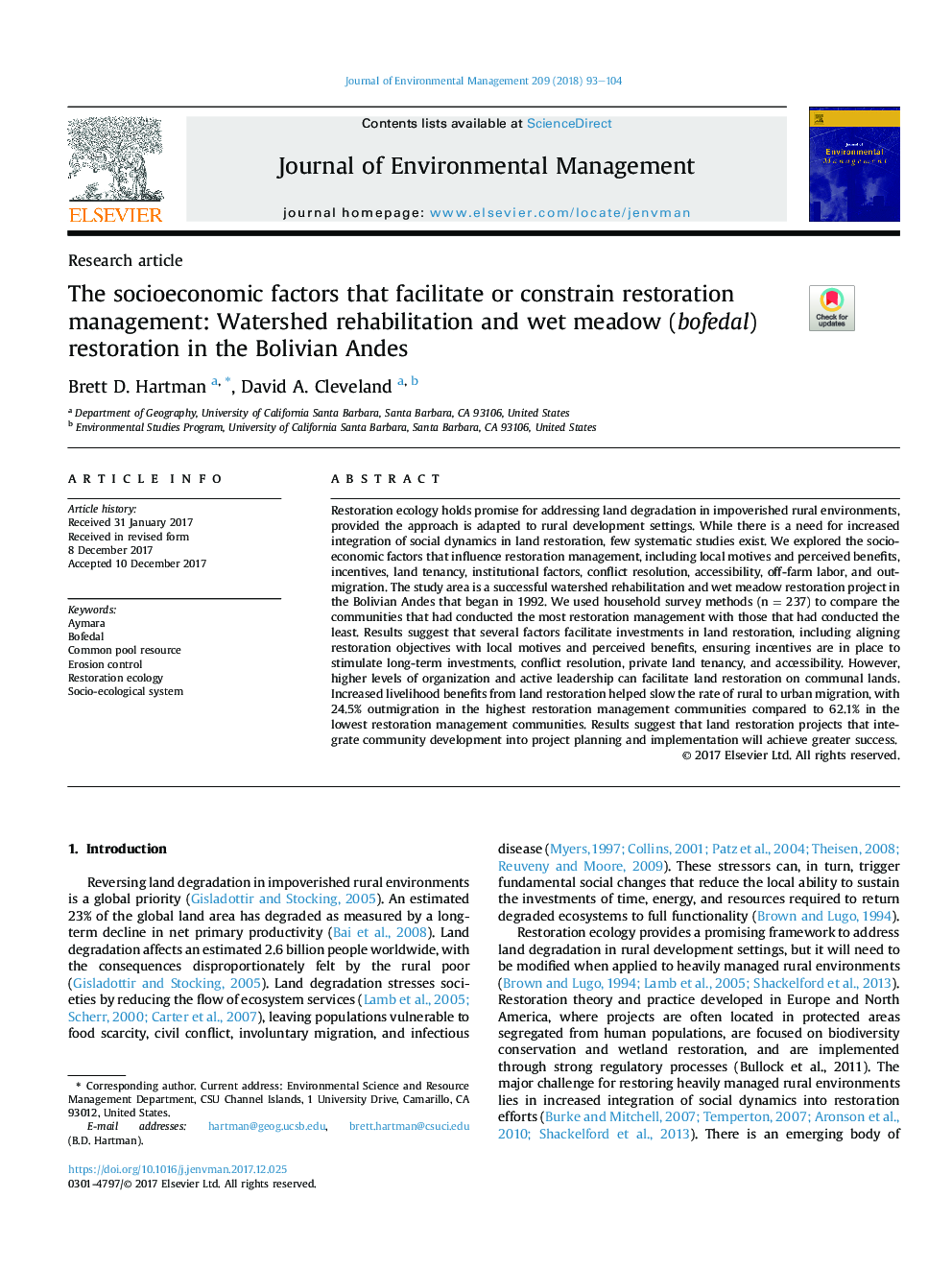| کد مقاله | کد نشریه | سال انتشار | مقاله انگلیسی | نسخه تمام متن |
|---|---|---|---|---|
| 7478202 | 1485209 | 2018 | 12 صفحه PDF | دانلود رایگان |
عنوان انگلیسی مقاله ISI
The socioeconomic factors that facilitate or constrain restoration management: Watershed rehabilitation and wet meadow (bofedal) restoration in the Bolivian Andes
ترجمه فارسی عنوان
عوامل اجتماعی-اقتصادی که تسهیل یا محدود کردن مدیریت ترمیم: بازسازی آبخیزداری و بازسازی مراتع مرطوب (بفدال) در آند آندر بولیوی
دانلود مقاله + سفارش ترجمه
دانلود مقاله ISI انگلیسی
رایگان برای ایرانیان
کلمات کلیدی
ایمارا، بوفدال، منابع استخر مشترک، کنترل فرسایش، محیط زیست بازسازی، سیستم اجتماعی و زیست محیطی،
موضوعات مرتبط
مهندسی و علوم پایه
مهندسی انرژی
انرژی های تجدید پذیر، توسعه پایدار و محیط زیست
چکیده انگلیسی
Restoration ecology holds promise for addressing land degradation in impoverished rural environments, provided the approach is adapted to rural development settings. While there is a need for increased integration of social dynamics in land restoration, few systematic studies exist. We explored the socioeconomic factors that influence restoration management, including local motives and perceived benefits, incentives, land tenancy, institutional factors, conflict resolution, accessibility, off-farm labor, and outmigration. The study area is a successful watershed rehabilitation and wet meadow restoration project in the Bolivian Andes that began in 1992. We used household survey methods (n = 237) to compare the communities that had conducted the most restoration management with those that had conducted the least. Results suggest that several factors facilitate investments in land restoration, including aligning restoration objectives with local motives and perceived benefits, ensuring incentives are in place to stimulate long-term investments, conflict resolution, private land tenancy, and accessibility. However, higher levels of organization and active leadership can facilitate land restoration on communal lands. Increased livelihood benefits from land restoration helped slow the rate of rural to urban migration, with 24.5% outmigration in the highest restoration management communities compared to 62.1% in the lowest restoration management communities. Results suggest that land restoration projects that integrate community development into project planning and implementation will achieve greater success.
ناشر
Database: Elsevier - ScienceDirect (ساینس دایرکت)
Journal: Journal of Environmental Management - Volume 209, 1 March 2018, Pages 93-104
Journal: Journal of Environmental Management - Volume 209, 1 March 2018, Pages 93-104
نویسندگان
Brett D. Hartman, David A. Cleveland,
